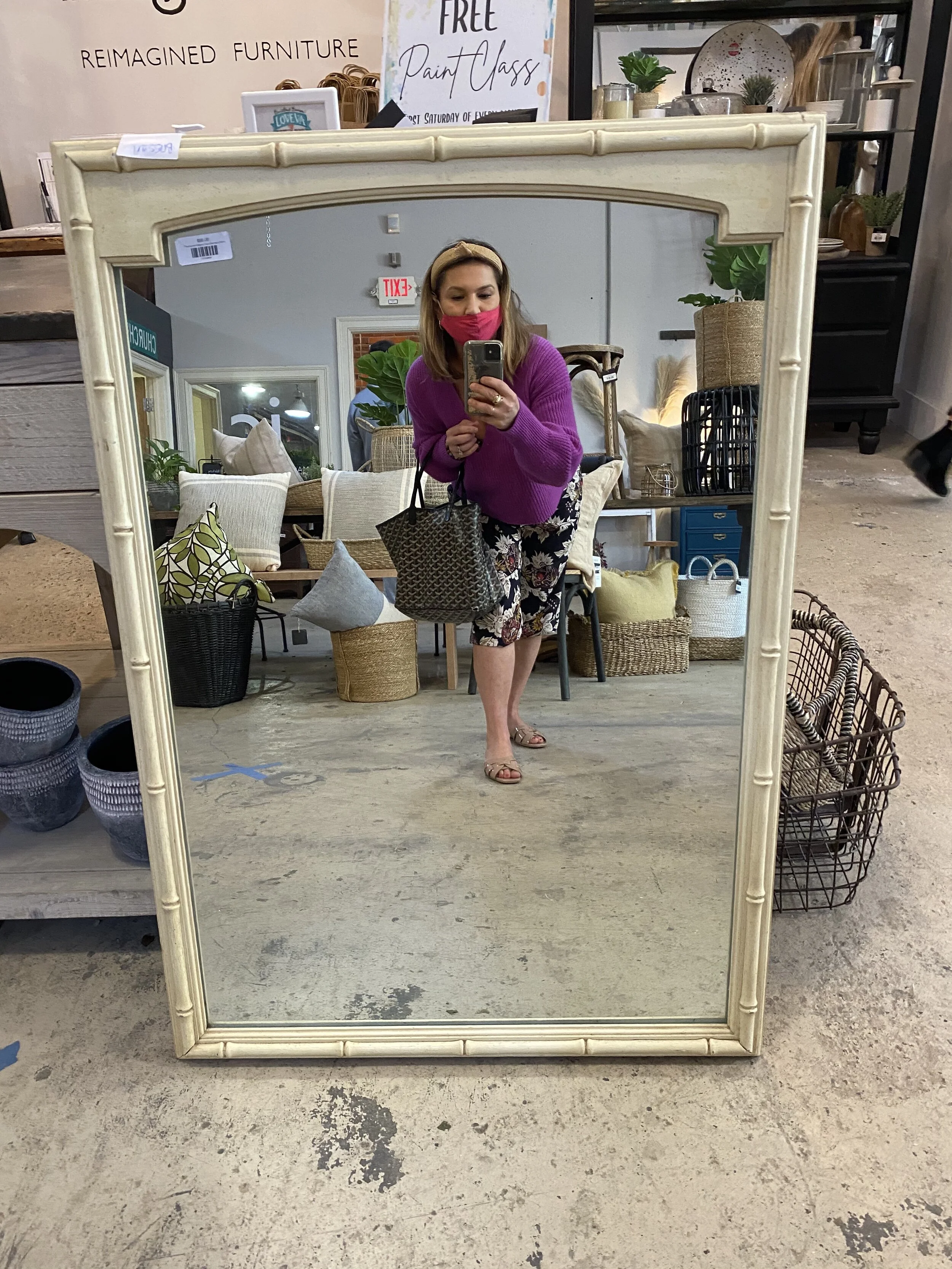Fast Fashion's Footprint is Frightening. Buy Secondhand instead.
I seriously hardly buy anything new anymore
Why? I get better quality clothes and better deals on consignment. AND I'm saving the planet.
According to The RealReal, the future of fashion is circular. “Unlike the traditional linear economy of make, use and dispose, the circular economy is restorative and regenerative by design. With the help of our shoppers and sellers, we're contributing to a more sustainable fashion industry where luxury goods stay in circulation.”
Read more about Real Real's High fashion, low carbon sustainability initiatives.
Fast Fashion's Footprint is Frightening
The fashion industry is one of the world’s top polluting industries at a time when climate change is threatening the planet. The reason? Fast fashion.
Fast fashion is a design, manufacturing, and marketing method focused on rapidly producing high volumes of clothing. The clothing is cheap, trendy, and disposable. Think H&M, Zara, Target, Walmart etc. Fast fashion markets, encourages, and facilitates shoppers to unapologetically update their wardrobes each season to keep up with the latest styles and hot trends.
"The environmental impact of this behavior is significant: the clothing and textile industry is depleting non-renewable resources, emitting huge quantities of greenhouse gases, and using massive quantities of energy, chemicals, and water. The synthetic fibers often favored by fast fashion brands, such as polyester, nylon, and acrylic, are a kind of plastic made from petroleum, which means they could take up to a thousand years to biodegrade." Source Fast fashion quick to cause environmental havoc - The University of Queensland.
Most of our trashed clothing could be re-worn, recycled, or re-used.
According to the Ellen MacArthur Foundation, each American throws away 80 pounds of clothing per year on average; More than 50% of fast fashion is disposed of in less than a year source, and 1 garbage truck worth of textiles is landfilled or burned every second.
The World Bank estimates that 17 to 20 percent of industrial water pollution comes from textile dyeing and finishing treatment given to fabric. Source: Textile dyeing industry an environmental hazard, Rita Kant
On top of all of that, the conditions that the garment industry workers work under are unimaginably toxic and may entail endless working hours, unacceptable health and safety conditions, forced labor, and child labor.
The effects of this insatiable appetite for fashion have extreme impacts on people and the environment. All in all, the world has more than enough clothes than we need. Overproduction of clothing is harming our planet.
What we can do?
Become conscious consumers and lessen our demand for new products, especially fast fashion.
Buy fewer items- How much MORE do we really need?
Shop secondhand - Check out The RealReal, Poshmark, yard sales, thrift stores
Learn your consumption behavior and patterns both in store and online. Discover how you may consume less. Remember- ordering online can often add to the carbon footprint with packaging and transportation pollution.
Consign items we don’t wear or love- give them a new home.
Only purchase high-quality classic styles that you love and fit perfectly.
Lessen impulse buying- wait a few days before making that purchase.
For special events, consider renting or borrowing clothes (let's be real, how many times are you going to wear that cocktail dress?)
Swap and share clothes with friends and family.
Tailor and upcycle your clothes to evolve with you over time.
Shopping second-hand helps save on the natural resources that go into making a new garment and keeps a piece of clothing out of the landfill. You get higher quality, designer items for cheap. You’ll often find unique, vintage pieces that can define your personal style.
Check out my 10 latest secondhand finds.
Then share your favorite secondhand finds on MappCraft | Tiny Closet, Tons of Style® Survival Guide
1
Vintage bamboo mirror (painting high gloss blue, Industrial Cottage, Norfolk VA $75)
ALC cashmere sweater (RealReal $65)
No 9 silk romper (RealReal $80)
2
Mid Century lucite zig zag chair, valued $1650, paid $225
French Twist, VB
3
Jonathon Adler pillow (RealReal $75)
4
Goyard tote, value $2650, paid $400 private deal
5
YSTAD METALL VINTAGE PAIR OF BRASS CANDLE HOLDERS
value $415.00, paid $55 Poshmark
6
The Lucky Shopping Manual .98, CHKD Thrift Store, Norfolk, VA
7
Virginia MetalCrafters vintage brass leaf, value $225, paid $1.98, CHKD Thrift Store, Norfolk, VA
8
No. 9 Silk Romper, NWT $85, RealReal
Tamara Melon gold square toe lace up wedge, NWT, $140 RealREal
Jimmy Choo purple leather crossbody adorned with Hermes Twilly, purse gifted from Pilar, Twilly bday present from BFFS
9
Chippendale style lamps, painted orange, Industrial Cottage, Norfolk VA $225 for pair and custom painting
Picasso print, $15 garage sale
Brass sailboat, $5 garage sale
Vintage brass ?, $15 poshmark
10
Ralph Lauren 100% green leather jacket, $65 RealReal
Want more?
Schedule your free consultation call with me!
Re-Read SPRING 2020 How to Create a Capsule Wardrobe E-Book to help you get started.
Download a FREE copy of my book: Clothes the Deal | The Guide for Transformative Personal Style
Also, If you haven’t already, join the fun on my private Facebook group MappCraft | Tiny Closet, Tons of Style® Survival Guide
xoxo Jenn














